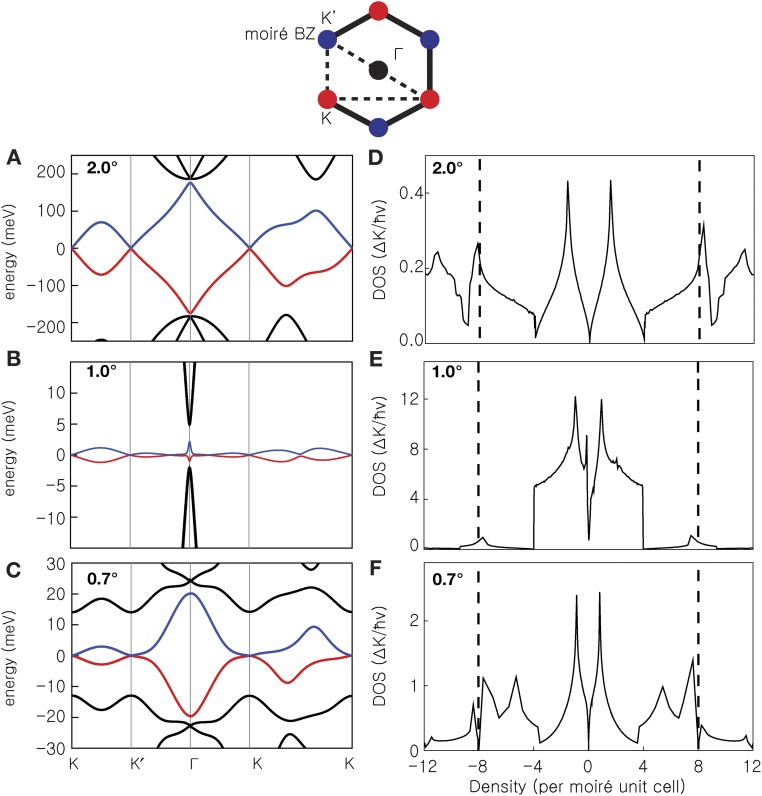Fig. S1.
Low-energy band structure (A–C) and DOS (D–F) for twisted bilayer graphene. Calculations are performed at the following twist angles: θ = 2° (A and D), θ = 1° (B and E), and θ = 0.7° (C and F). The path in the moiré BZ along which the band structure is calculated is shown as a dashed line in the upper cartoon. The blue and red circles represent the two inequivalent points in the moiré BZ at which the bands touch. The band structures are highly dependent on the twist angle, especially close to magic angles for which the lowest-energy bands become flat (15), as seen in the center. Independent of the twist angle, there are Dirac points at K and K′ in the moiré BZ which are associated with each layer. These manifest as a zero DOS at charge neutrality. The DOS has a sharp peak between 0 and 4 carriers per moiré unit cell, with minima close to ±4 carriers per moiré unit cell, corresponding to the filling of 1 band per spin and valley, for a total degeneracy of 4. Although there is a DOS minimum at ±4 carriers per moiré unit cell, experimentally there is a gap at ±8 carriers per moiré unit cell (dashed vertical lines in DOS plots) corresponding to a filling of 1 band per spin, layer, and valley.

